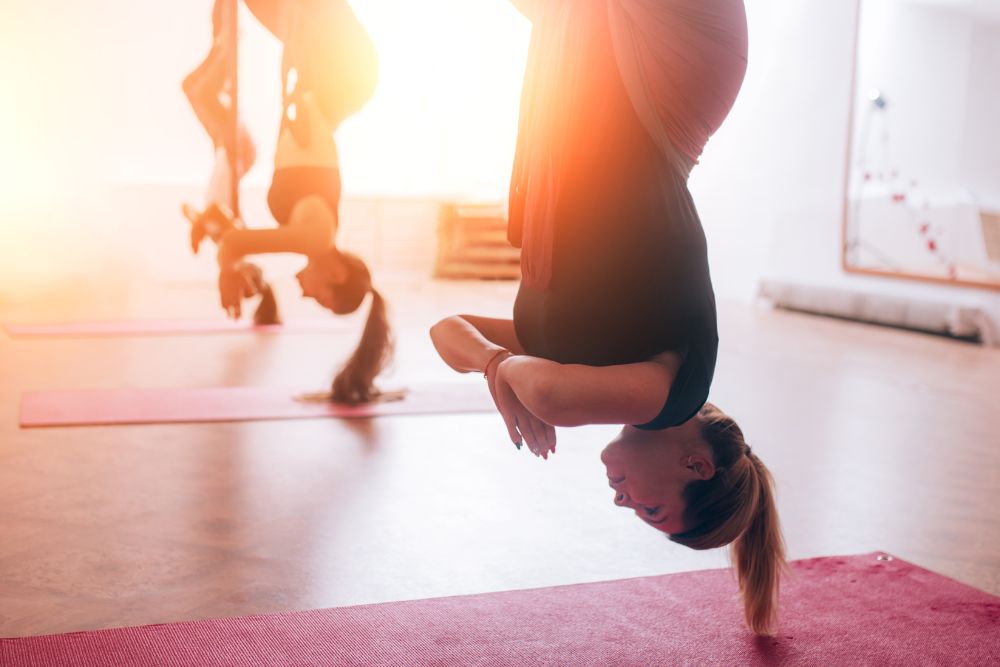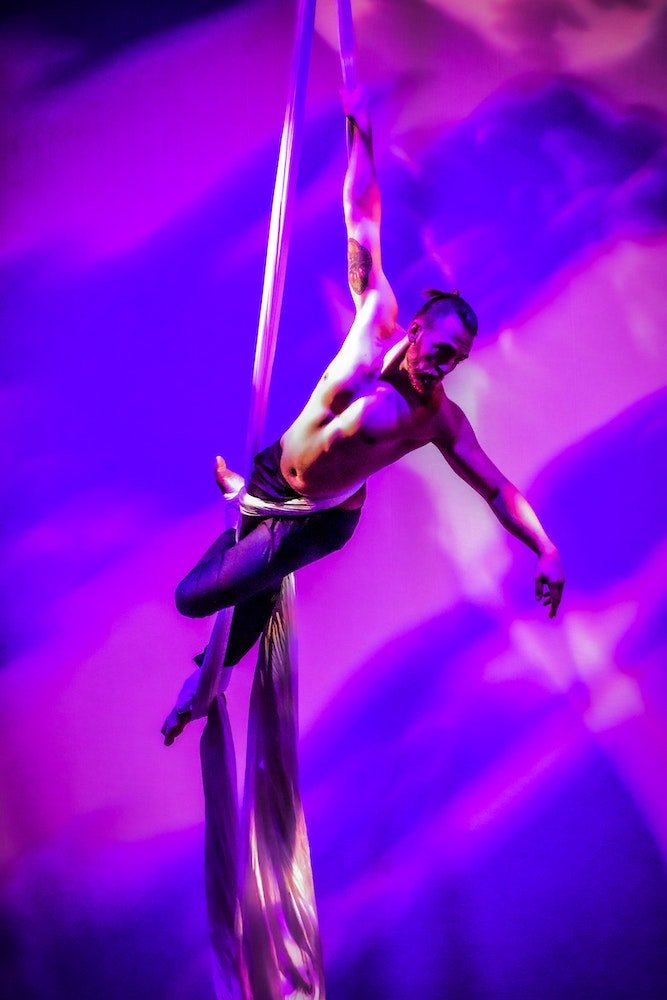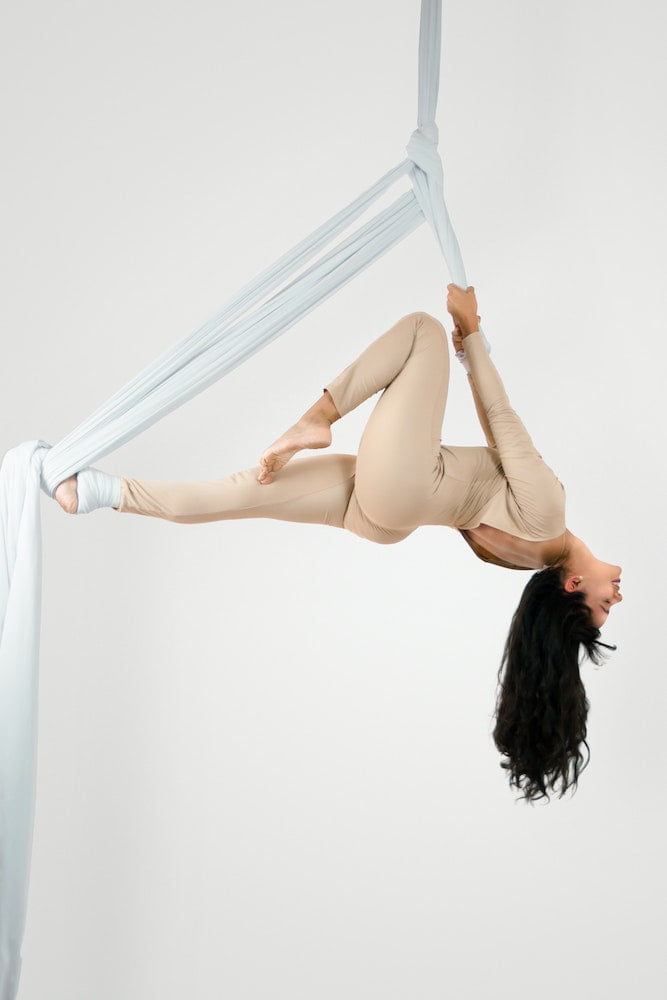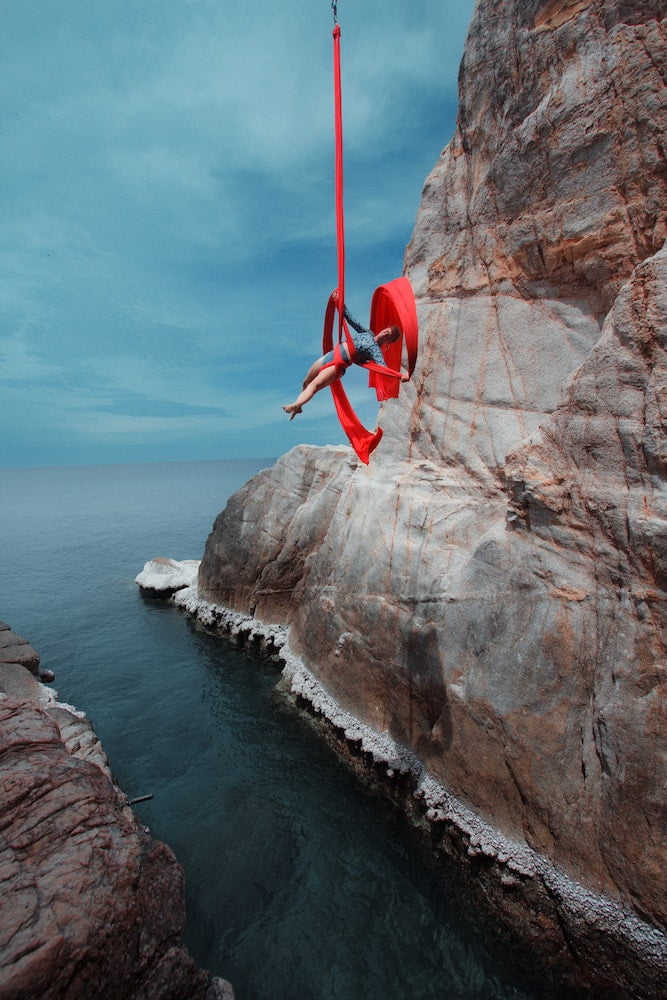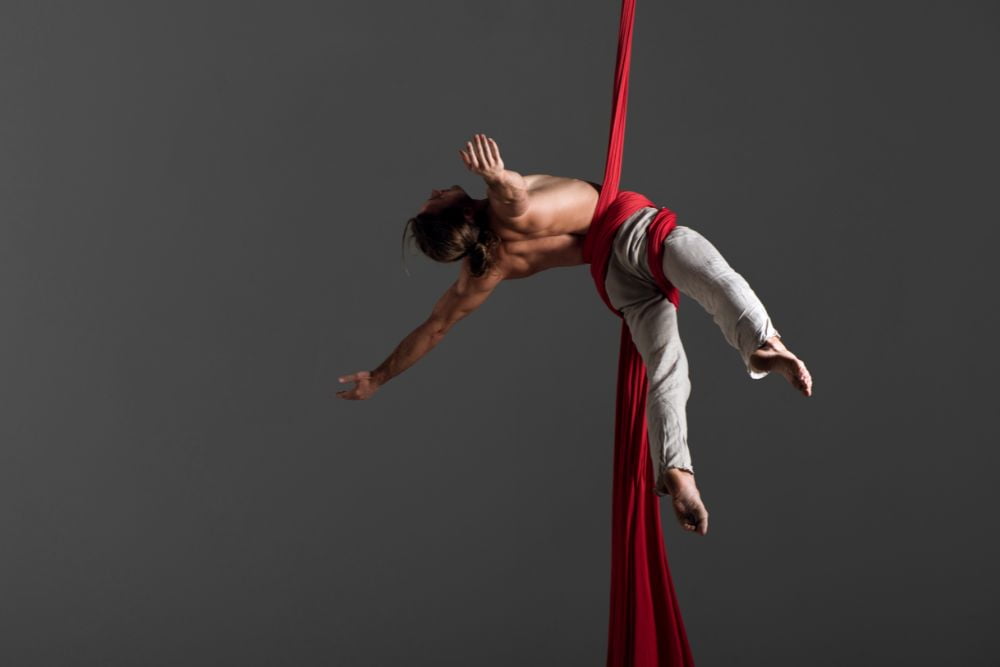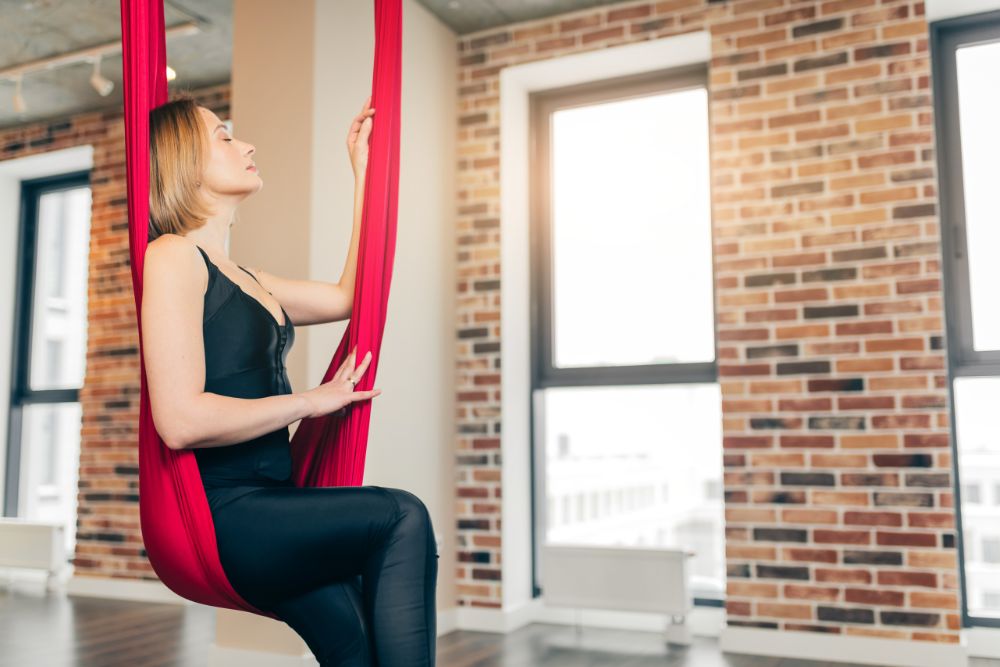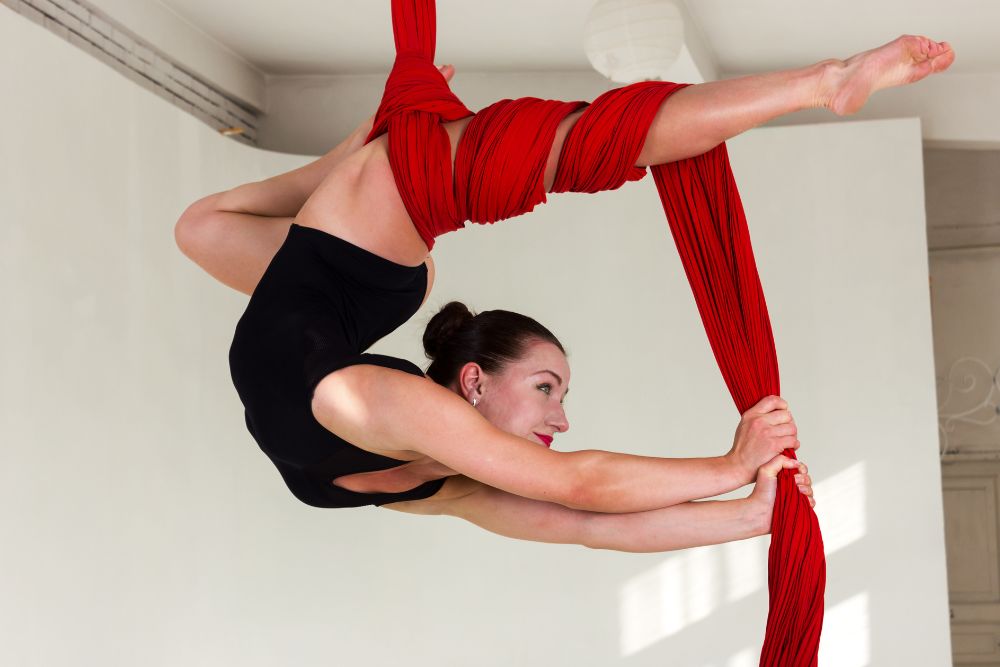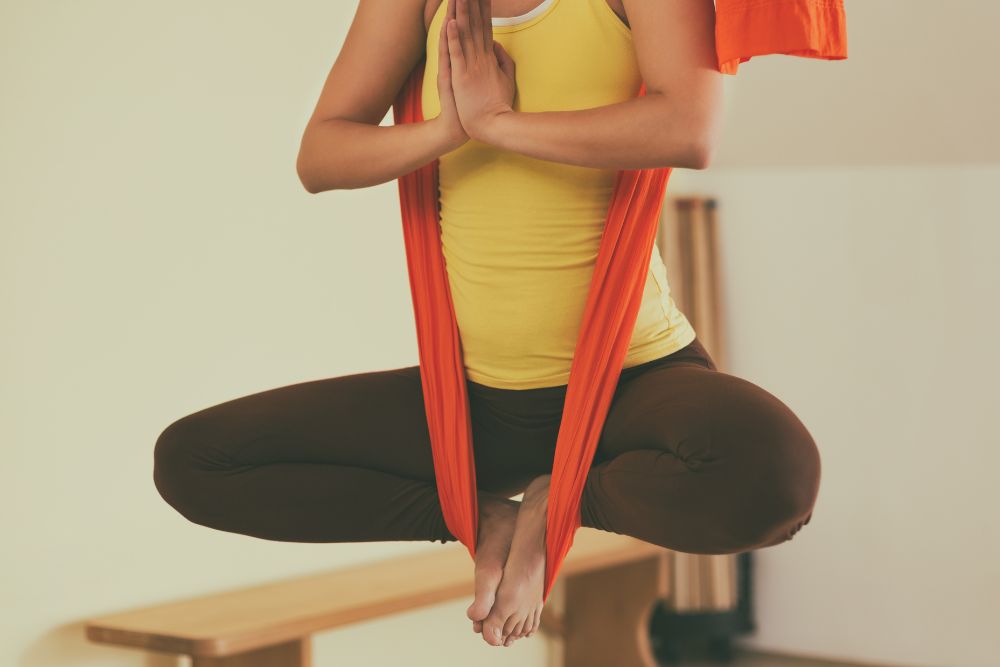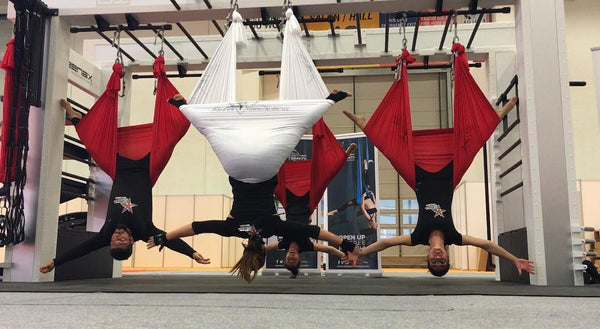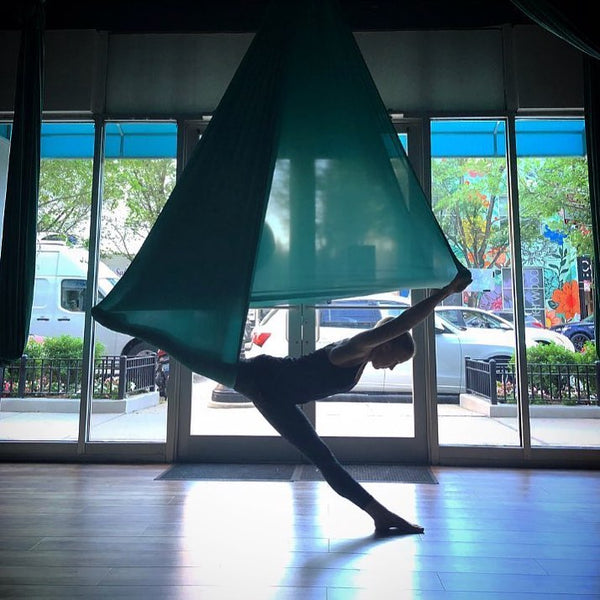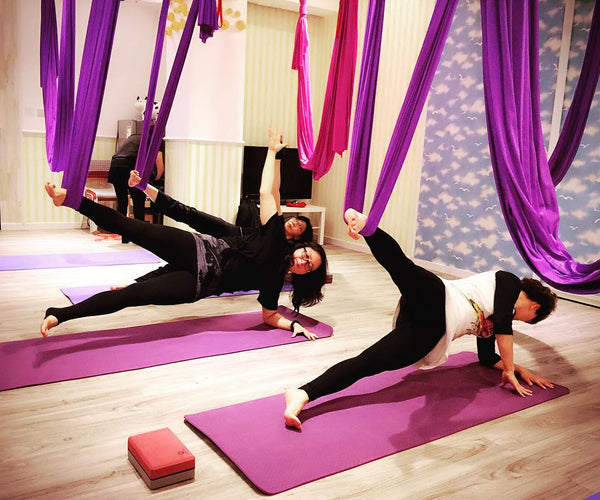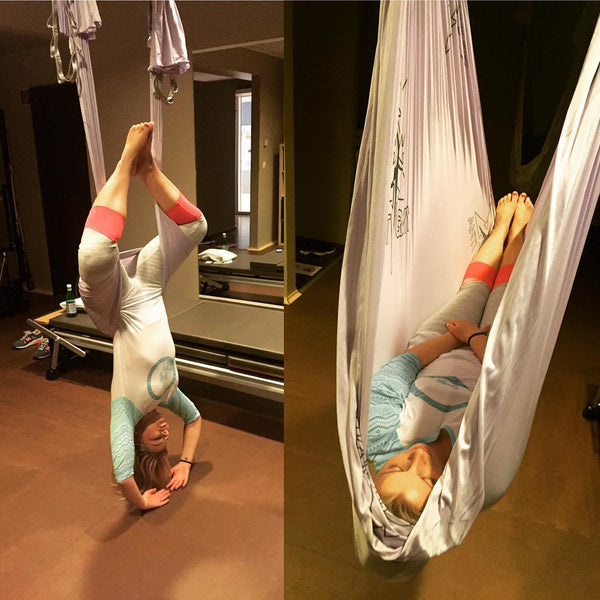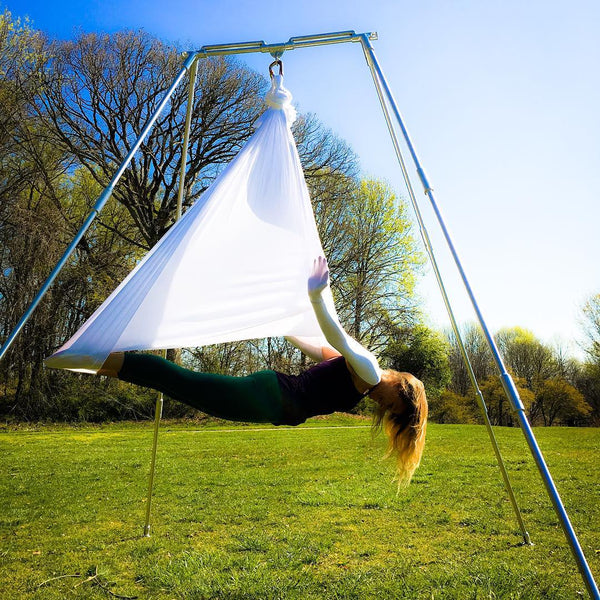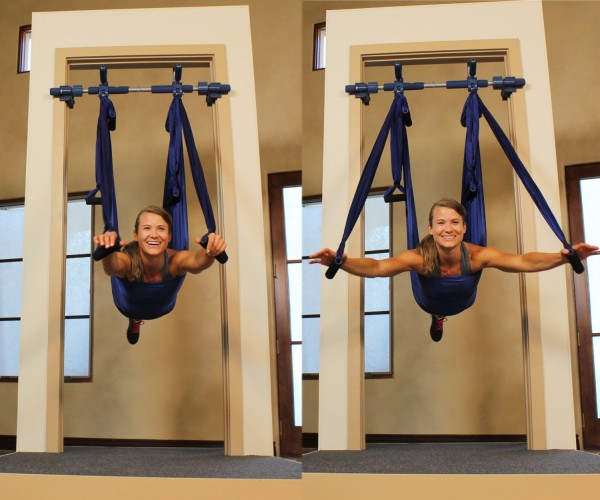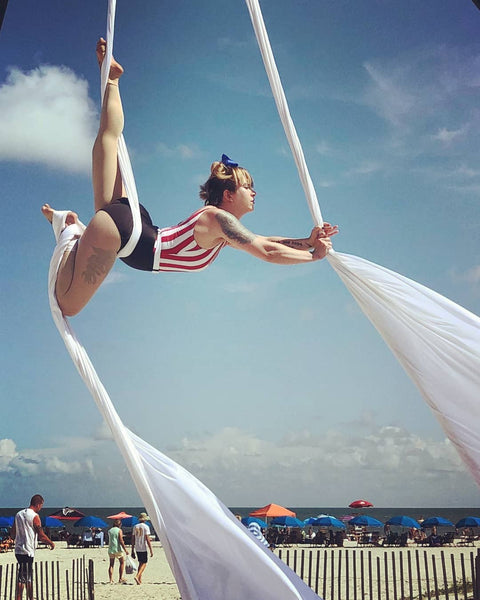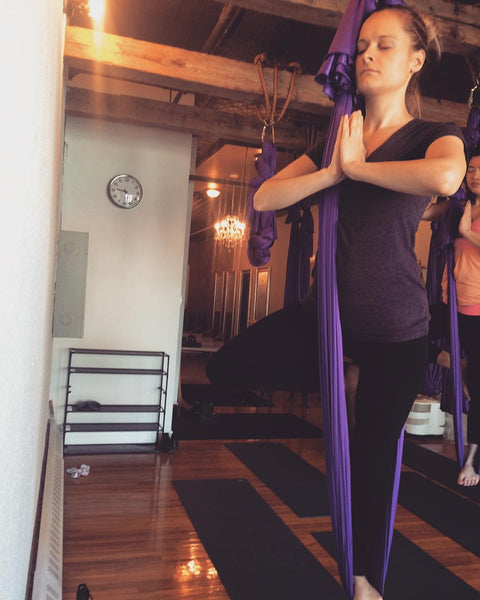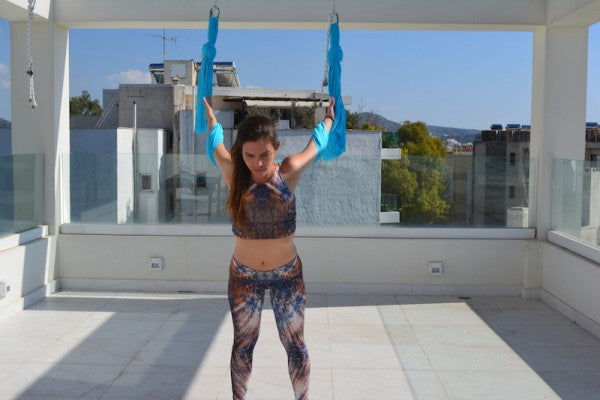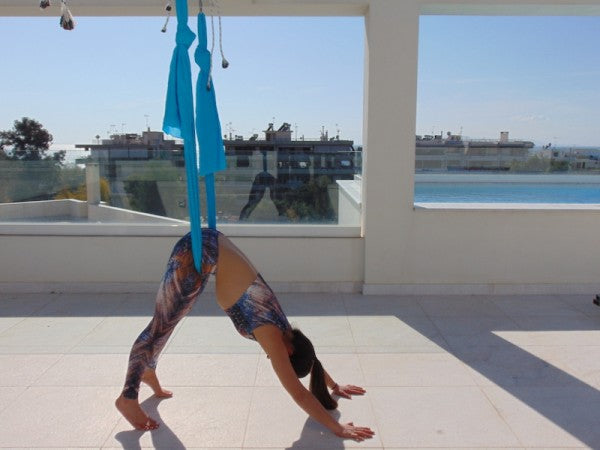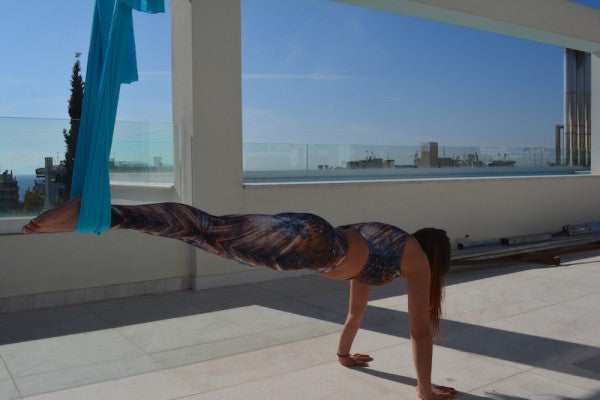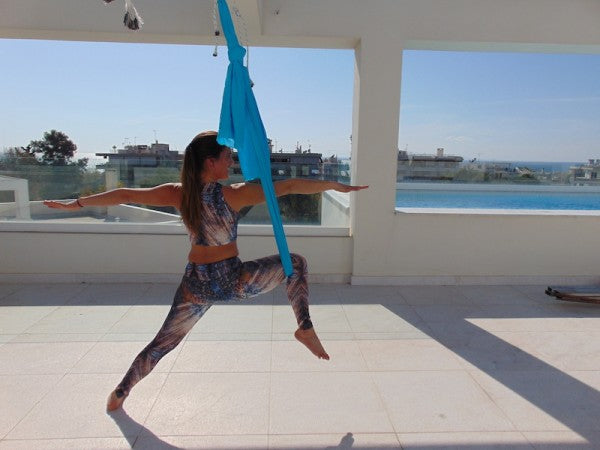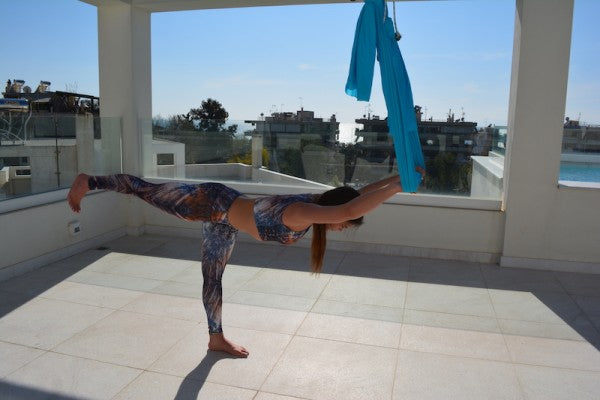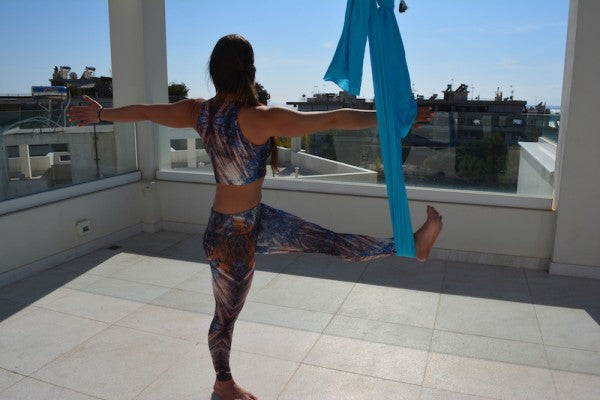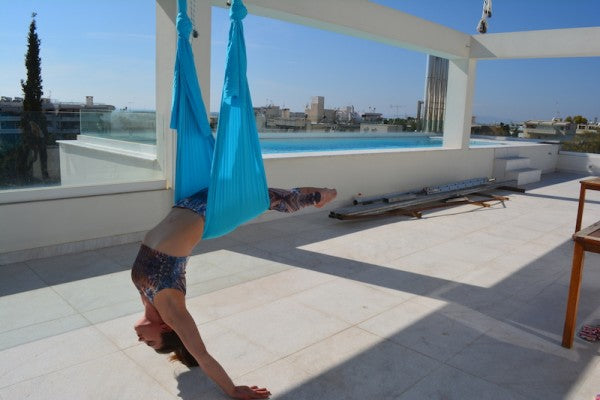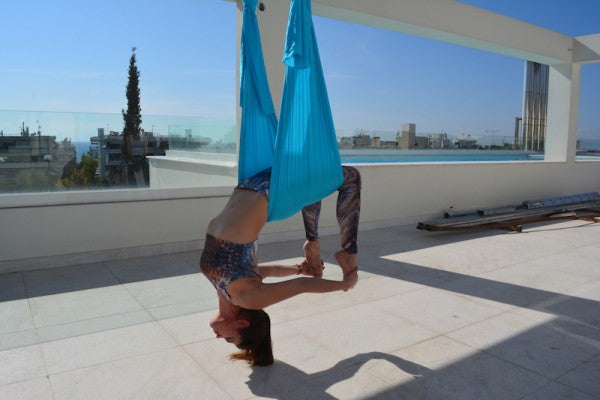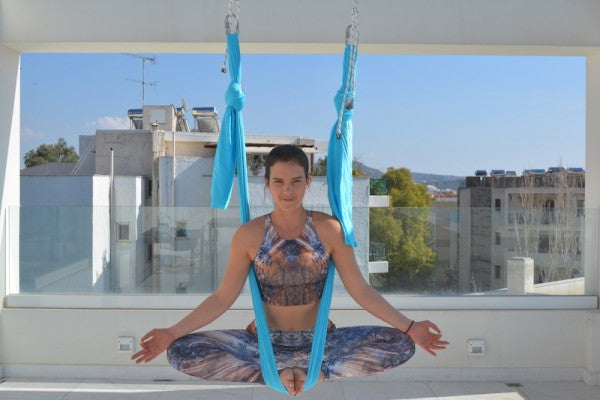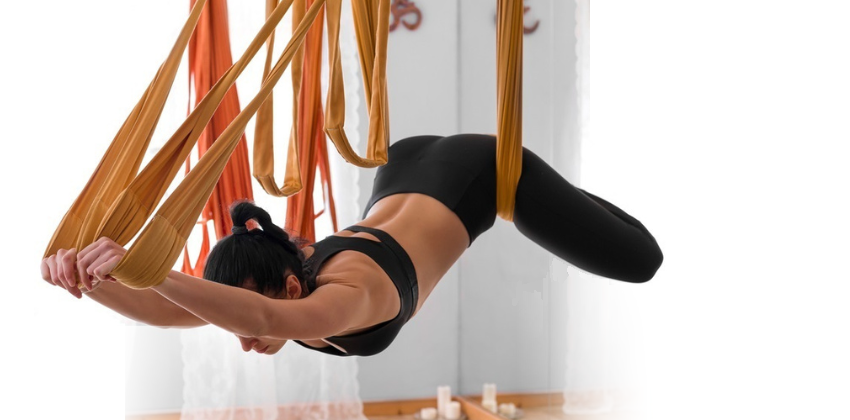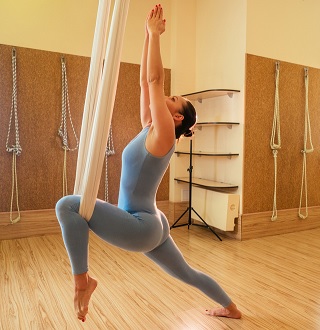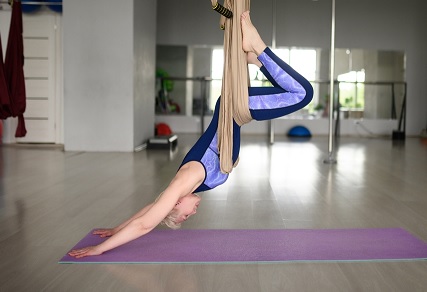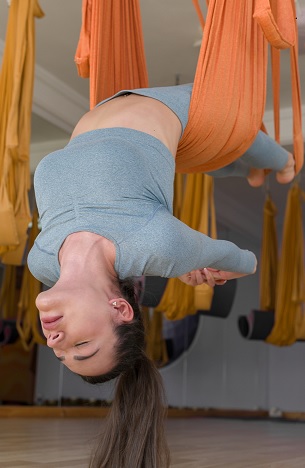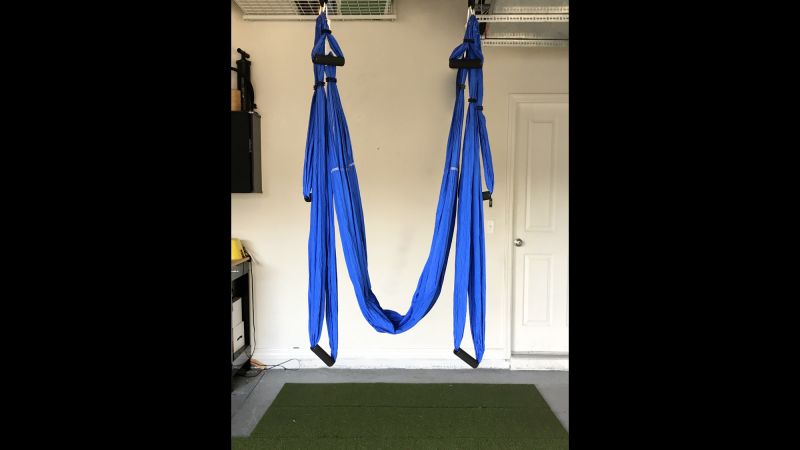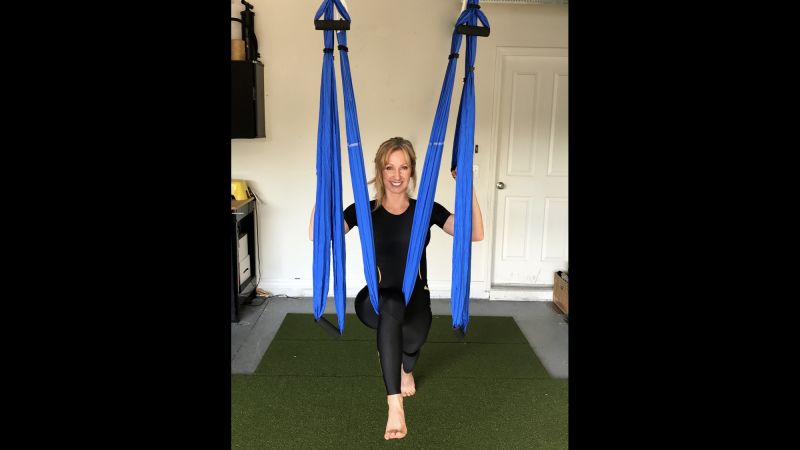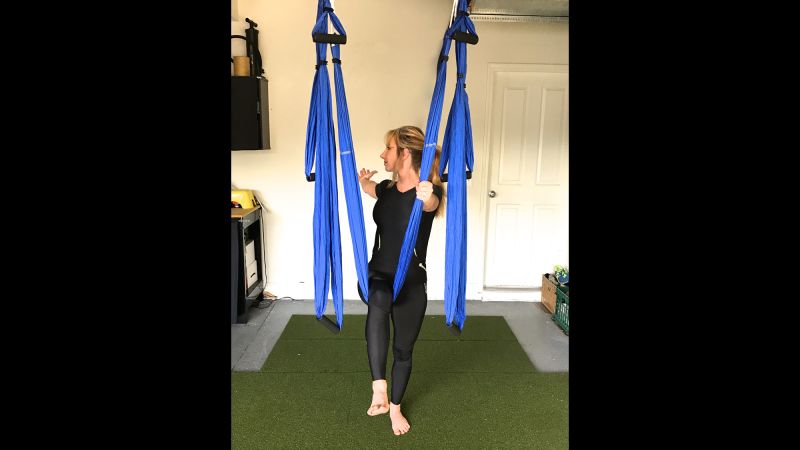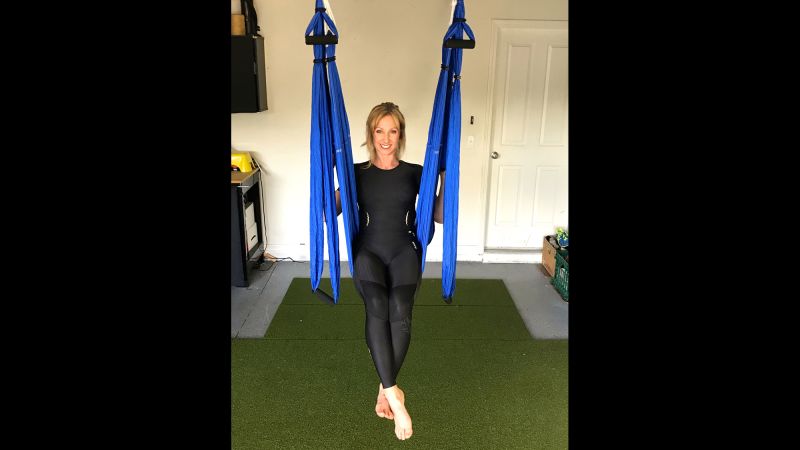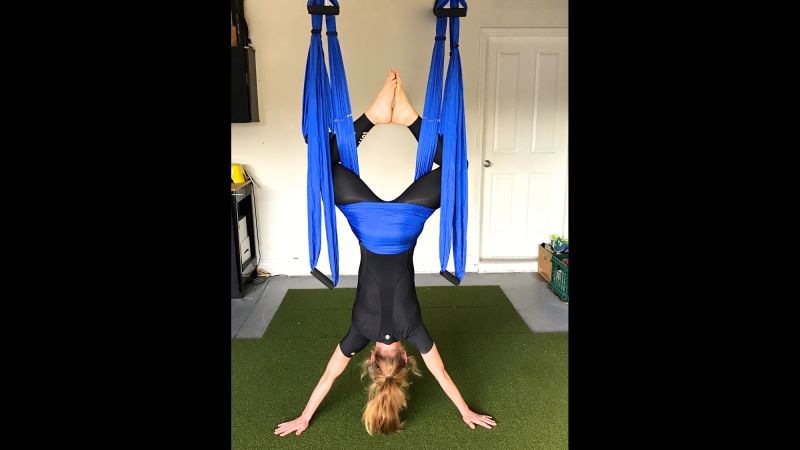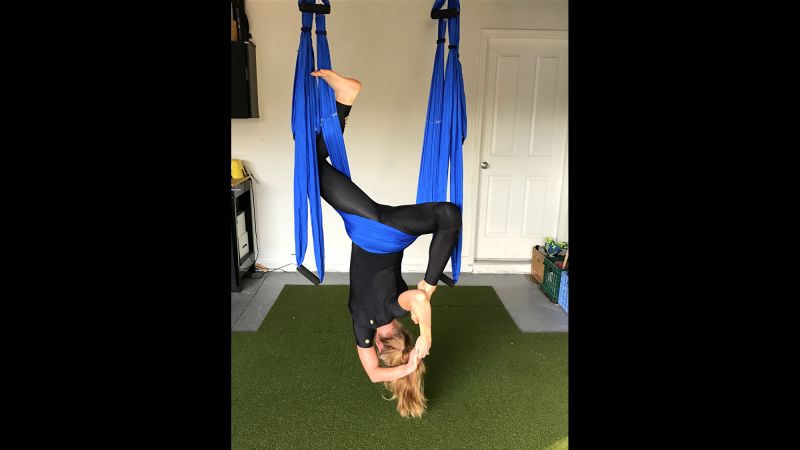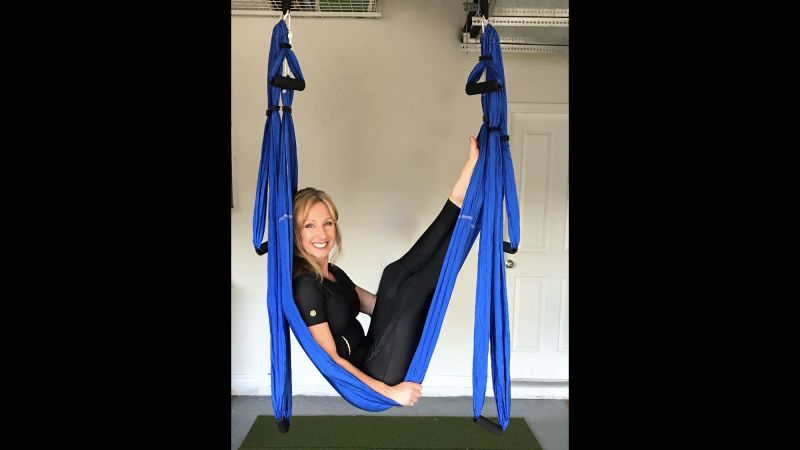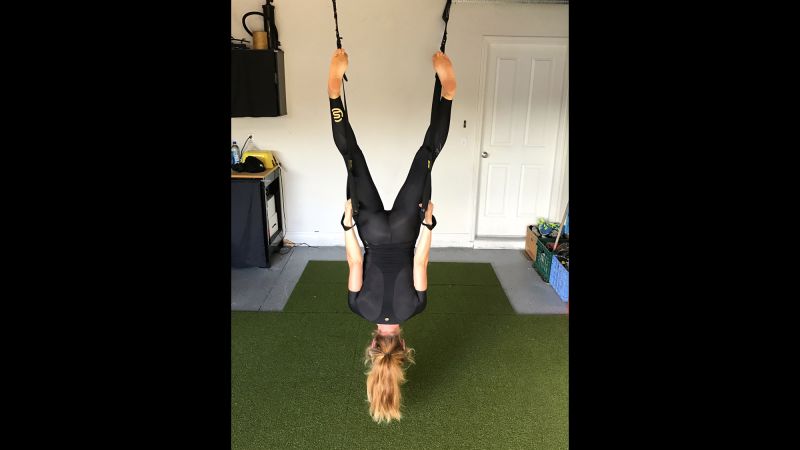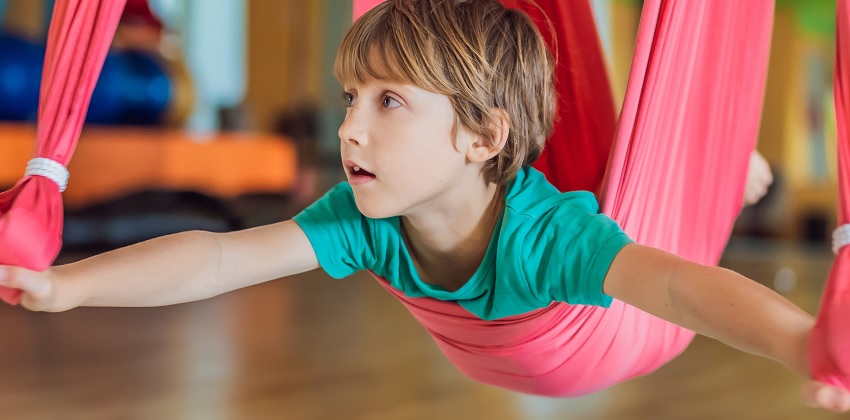
Most people assume that aerial yoga is only meant for adults. But the reality is that children can also benefit from doing yoga swing workouts.
By practicing aerial yoga with kids, you will be encouraging them to live an active and healthy lifestyle from an early age. Consequently, this will enable them to enjoy life to the fullest.
Practicing aerial yoga with kids also provides a great means of bonding with them, and besides, aerial yoga can be a super fun means of hanging out with your children and spending quality time with them.
And, research has shown that kids who spend ample quality time with their families tend to perform better in school, and they have lesser behavioral issues.
Furthermore, It provides the perfect opportunity of unplugging from your electronic devices and doing something that will offer health benefits to everyone.
In this article, we will walk you through some of the key benefits of practicing aerial yoga with children. We will also give you tips for practicing aerial yoga with kids, to ensure a fun, safe and effective session.
With that said, let’s dive straight in.
Benefits of Aerial Yoga for KidsAs highlighted above, practicing aerial yoga with kids or teaching kids yoga swing workouts comes with numerous benefits.
Here are 8 incredible benefits of yoga swing workouts for children:
Enhanced Cognitive FunctioningYoga swing workouts can help to improve cognitive functioning as well as focus. As you may have probably noticed, practicing aerial yoga requires a certain level of concentration, both for the mind and body.
Regardless of the pose that they’re doing, they will have to pay close attention to their body’s movement.
You will also have to focus on your breathing so that it can align with those body movements. And, when you practice aerial yoga with kids regularly, their cognitive functioning and focus will improve.
This increased focus will make them better in various aspects of their lives. For instance, their academic performance may improve or they may start performing better in sports.
Improved SleepDoing aerial yoga poses that entail mindful breathing and slow deep stretching before bedtime, will get the body moving. And this will help to alleviate stress. Consequently, you will find it easier to sleep better and longer, compared to when your body is tense, your mind is full or you are feeling stressed.
Practicing yoga with kids, especially before bedtime, can also help to release stress, relieve tension and remove negative emotions that may have accumulated throughout the day. As a result, you will help them to enjoy quality sleep at night.
So, if your child has been suffering from insomnia, you should consider introducing them to bedtime aerial yoga.
Can Help to Soothe Sore MusclesChildren spend a considerable amount of time playing. And while playing is highly encouraged and healthy activity for children, they may end up with sore muscles or feeling extremely tired, especially if they participate in an exercise they are not used to or harder than their level. And, this tiredness or fatigue can make it hard for some children to fall asleep.
Fortunately, gentle and relaxing yoga swing poses can help to alleviate the tension, fatigue and muscle strain that children may experience after an entire day of playing outside. By alleviating the muscle soreness and fatigue, your child will fall asleep faster.
And as you may probably know, quality sleep is important for all children, when it comes to their growth and development.
Improved Self-Regulation
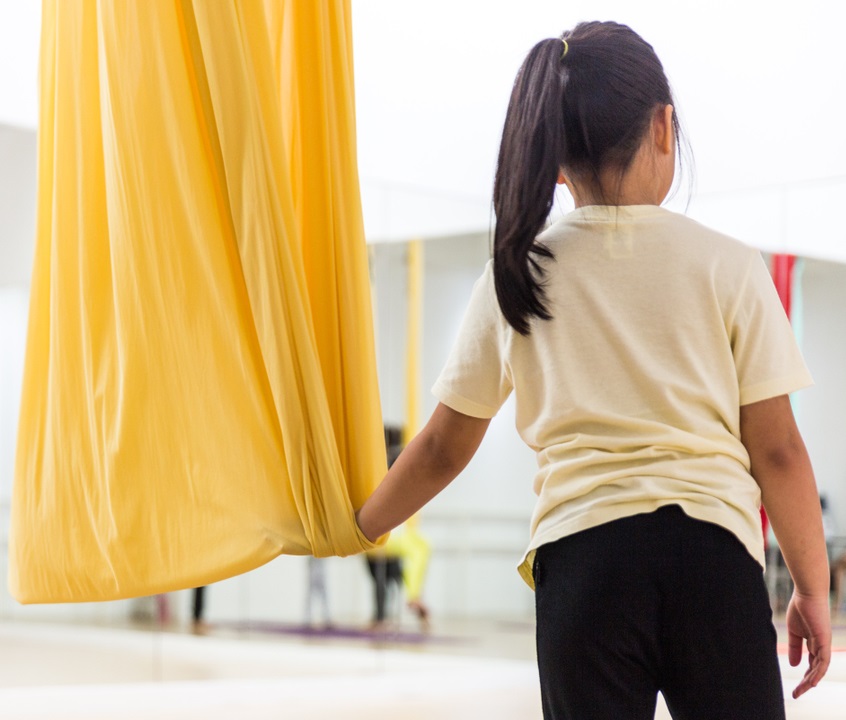
Self-regulation refers to an individual’s ability to recognize and change their emotions, thoughts and behavior, depending on the situation or circumstances at hand. And, aerial yoga can help to enhance this ability.
Whenever they are doing various yoga swing poses, kids will pay attention to their bodies and minds. Also, they will get a better understanding of their thoughts and feelings. And with this understanding, kids will be able to manage their emotions better, depending on the situation at hand.
For instance, if your kid is feeling frustrated at school or they’ve had an altercation with a classmate, they will struggle to pay attention to the learning material. And if this keeps happening, they will not retain any of the information being taught. Consequently, they may lag behind their classmates.
But when you practice aerial yoga with them, you will help to enhance their self-regulation. They will be able to reflect inwards and adjust accordingly, depending on the situation.
So, as much as they may be feeling angry or frustrated, their self-regulation will help them to cope with that issue appropriately and effectively, meaning it will not interfere with their learning.
Improved Breath Control and StrengthYoga swing poses require a considerable amount of strength to execute, both physical and mental. And with regular practice, you will notice several cognitive and physical changes within yourself.
For instance, a regular aerial yoga workout session can lead to enhanced flexibility, increased mental clarity and more upper body strength. And, all these benefits mainly stem from breath.
When you breathe quickly or harshly, you will reduce focus, increase muscle tension and increase your fight-or-flight response. And all these will have serious negative effects on the body and mind.
By practicing aerial yoga with your children, you will teach them proper breathing techniques while helping to enhance their mental and physical strength from a young age.
Consequently, the improved mental and physical strength will help to lower the chances of obesity and depressive symptoms, while increasing self-confidence and self-awareness. Also, practicing yoga swing workouts with kids regularly will help to boost their overall well-being.
Teaches Responsibility and DisciplineAerial yoga is more of a journey of a lifetime and not a destination. It requires plenty of patience and discipline.
When your children begin learning at a young age the advantage of a committed practice, it will transfer into other areas of their life, be it their activities at school, relationships as well as responsibilities.
And when they learn that antigravity yoga requires constant practice and patience as opposed to being an instant achievement, they will learn and accept that life, in general, is a path. They will have some good days, bad days and something in between. In short, they won’t grow up thinking that everything will be perfect every day.
And by accepting the reality of life, they won’t end up feeling frustrated or disappointed, in case things don’t turn their way sometimes. Through aerial yoga, they’ve already mastered the practice of picking up the pieces and moving on.
Boosts CreativityWhen practicing aerial yoga with kids, you can sometimes incorporate games and other themes, which will make the session more engaging and fun. For instance, you can allow your kids to come up with their own poses, designed to align with a particular theme.
By allowing them to come up with such poses, you will not only make the session fun and playful, but you will also be enhancing their creativity and boosting their imagination. And, this creativity will come in handy in several stages and areas of their life.
Boosts Self Esteem
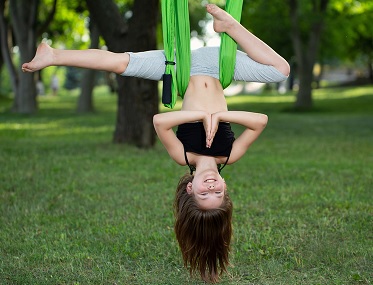
As earlier mentioned, aerial yoga requires a great deal of strength, focus, flexibility and concentration. And whenever you practice with your kids, they will eventually develop these key attributes.
Eventually, their confidence will grow. For instance, if your kid successfully executes the Crow Pose, they will believe in their capabilities.
With time, their self-esteem will grow, which will help to enhance their performances or productivity in other areas of their life.
For instance, a child with high levels of esteem will perform better in academics or sports, compared to one whose self-esteem and confidence are low.
Tips for Practicing Aerial Yoga with KidsWithout a doubt, practicing aerial yoga with kids comes with a wide range of benefits for both the child and the entire family as a whole.
If you are planning to get started on this practice, here are some pointers that will help you to enjoy a fun, safe, and effective yoga swing workout session with kids.
Choose Age Appropriate PosesThe yoga swing poses that you will select for a three-year-old, an eight-year-old or a teenager are all different.
After all, children in these different age groups are at different levels of growth. Besides, they have varying levels of understanding and abilities to grab different concepts.
To this end, you need to make sure that the yoga swing poses that you choose for the kids you are training align with their age.
For instance, if you intend to practice yoga swing workouts with a pre-schooler, then you should incorporate imagination and stories. As for the poses, they should be light and easy to execute.
At the same time, if you are practicing antigravity yoga swing poses with an eight-year-old, you can still incorporate some storytelling and imagination but you will also make the poses a bit more challenging.
In case you are practicing with teenagers, then you should incorporate poses that entail lots of stretching, strength and flexibility. At this age, kids are ready to transition into advanced aerial yoga poses like meditation techniques and pranayama breathing.
Practice in the MorningKids experience varying levels of energy throughout the day. For instance, when they wake up, they are bubbling with energy and they are ready to go outside and start playing.
But by the time the afternoon comes around, they are already quite tired and sleepy. So, if you want to practice aerial yoga with your children, it will be highly advisable to slot the practice session for the morning hours, when their energy levels are extremely high.
Also, the concentration levels are equally high during the early morning hours, compared to afternoon hours. Hence, you will find it much easier to get them to focus.
Besides, they will be in a better position to manage demanding poses, compared to the afternoons when their bodies are already tired and their focus has diminished.
So, if you want to practice yoga swing workouts with your children, the morning hours will be the most ideal.
Make the Session Lively and Fun
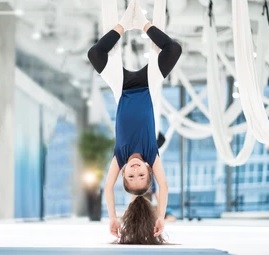
When practicing aerial yoga with children, you need to find ways of making the sessions fun and lively. Doing so will not only help to grab their attention but it will make them easier to master various aspects of this practice.
Fortunately, there are several available strategies and approaches, which you can use to make the sessions livelier and more fun.
For instance, you can play some age-appropriate, yoga-friendly music. Such music will help to make the practice more fun and enjoyable.
And when children are enjoying themselves, you will also find it easier to teach the different yoga swing poses based on their age group.
Apart from music, you can also incorporate props like scarves and feathers. You can use such scarves to visualize movement and breathing, thus making it easier for the kids to understand whatever you are trying to teach them.
Mandalas will also be a great tool to incorporate into your aerial yoga swing sessions with kids. They can help to aid concentration and mediation.
With mandalas, you simply need to print them from online sources or even print out our lotus logo!! You can then have the kids color them using beautiful patterns. This activity will help the kids to focus their minds while calming them down.
End the Session with Relaxation PosesJust like a relaxing aerial yoga practice for parents, you should end the session with some meditation. Ending the practice this way will help their bodies to cool down, relax and unwind.
For kids, it doesn’t have to be something complicated. You can simply have them lie still on their backs, as you narrate a story about something imaginary, which will help to shift their minds somewhere else. A brief session of around 10 minutes or so should be enough.
From there, you can then share some snacks you may have, praise them and leave them to their day.
Wrapping It Up
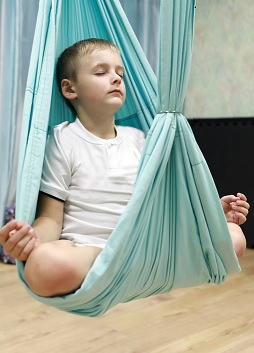
Practicing aerial yoga with kids can help to enhance their physical, spiritual, and mental well-being in various ways.
By observing the tips we’ve shared in this guide, you can make your aerial yoga swing session with your kids more enjoyable, safer, effective, and more productive.
Good luck!!
[……]
Read more
